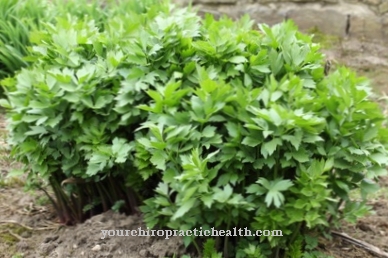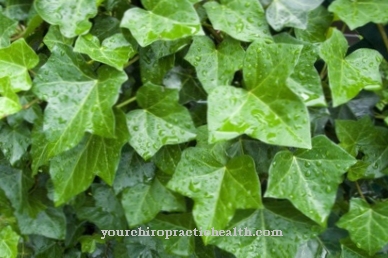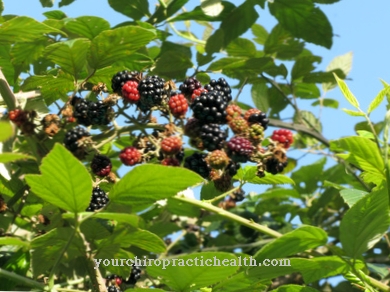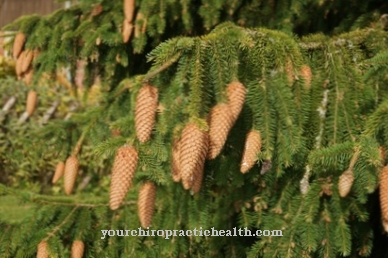Occurrence & cultivation of angelica

It used to be Angelica a very popular plant in folk medicine that was found in almost every cottage garden. Today it is seldom consciously planted. In nature it occurs mainly in overgrown gardens, on railway embankments, on damp meadows, on ditches or in the open field. It has egg-shaped, pinnate leaves that are slightly pointed. The slightly bluish stems are hollow and round. Their surface is grooved. The small, greenish flowers grow in large, round umbels.
The plant has very thick roots. The angelica will too real angelica, Ore angelica, Angel herb, Heiligenwurz Holy Spirit Root, Tooth root or Nipple called. There is a risk of confusion with the forest angelica and the water hemlock. It is dangerous to confuse it with the water hemlock because it is extremely poisonous. The leaves of the water hemlock are sawn on the edge and its roots are bulbously thickened and divided into chambers by transverse walls. On the other hand, the confusion with the forest angelica is harmless. This plant is smaller than angelica, the roots are thinner and the flowers are white to reddish.
Effect & application
The roots of plants that are at least 2 years old are mainly used. They contain bitter substances, essential oils and vitamin B12. The roots are dug up, washed well and split lengthways. After drying in a warm room, the roots must be stored in well-closed containers, as they are very popular with insects.
Leaves, stems and seeds are also used. Angelica has an antibacterial effect, against flatulence and bloating, it stimulates the appetite and the gastric juice and pancreas secretion. Alcoholic extracts and teas are made from the roots. In addition, the essential oils are extracted from the roots and seeds. These are often added to liqueurs, which are then sold as bitters. However, larger amounts of these essential oils can lead to symptoms of intoxication.
Angelica is also said to help against poisoning. It was used as a plague medicine. The root is also used in powder form. Teas are also made from the leaves and stems of the plant. More recently, angelica has also been found in creams. You can also take baths with angelica additives. In addition, crushed leaves and stems of angelica are used as a spice.
The leaves can also be prepared as a vegetable. However, caution is advised. Overdosing or direct skin contact with the sap of the plant can make the skin more sensitive to light and cause skin irritation. Not everyone can tolerate angelica. Anyone who suffers from a heart disease or has an increased risk of it should not consume angelica or products made from this plant.
Angelica increases blood clotting. This will reduce blood flow and this can lead to a heart attack. Since angelica stimulates the uterus in larger quantities, it should not be used during pregnancy.
Importance for health, treatment & prevention
In order to use angelica for the treatment of existing health problems or for prevention, it is either planted in your own garden or you can fall back on corresponding offers in pharmacies or mail order companies. Angelica has to be sown in autumn because it is a cooling germ.
As a spice, crushed stems and leaves of the plant can be used in sauces, soups and salads. The leaves can be prepared as vegetables, the roots as parsnips. Angelica stems can be eaten raw. It tastes aromatic, the stems fruity. In sour compotes, such as rhubarb or gooseberry, it reduces the acidity. As an addition to jams, it enhances the aroma. Liqueurs that contain angelica are used to treat digestive problems.
Already 2,000 years ago the Theriac potion was used as a remedy for all kinds of poisoning. Angelica root is said to have been a main component of this potion. Kneipp also recommended a tea made from angelica leaves, roots and seeds as a remedy for poisoning. A tea can easily be made by brewing a teaspoon of crushed angelica root with 150 ml of hot water. It has to draw for 10 minutes and is then strained. A cup of this tea, lukewarm daily, drunk half an hour before meals, should help against intestinal cramps.
It is also recommended for absent menstruation and for expelling the afterbirth. After all, it should also help when there is no need to urinate, as well as strengthen the liver and spleen. Lice should also be able to be killed with an external application of this tea. A tea made from leaves and stems can be used to gargle for tonsillitis. Baths with angelica added are said to help with rheumatism and gout.
Cough syrups with angelica are offered and an ointment containing components of the plant is said to help against radiation damage in cancer therapy. By chewing the root, an alcohol hangover should be dispelled. The powdered root has an antibacterial effect and is said to help against athlete's foot or insect bites, for example. In the past, the powder was also used externally for gout and sciatica, as well as for ulcers or bites. Angelica is said to help even with smoking cessation.













.jpg)

.jpg)
.jpg)











.jpg)